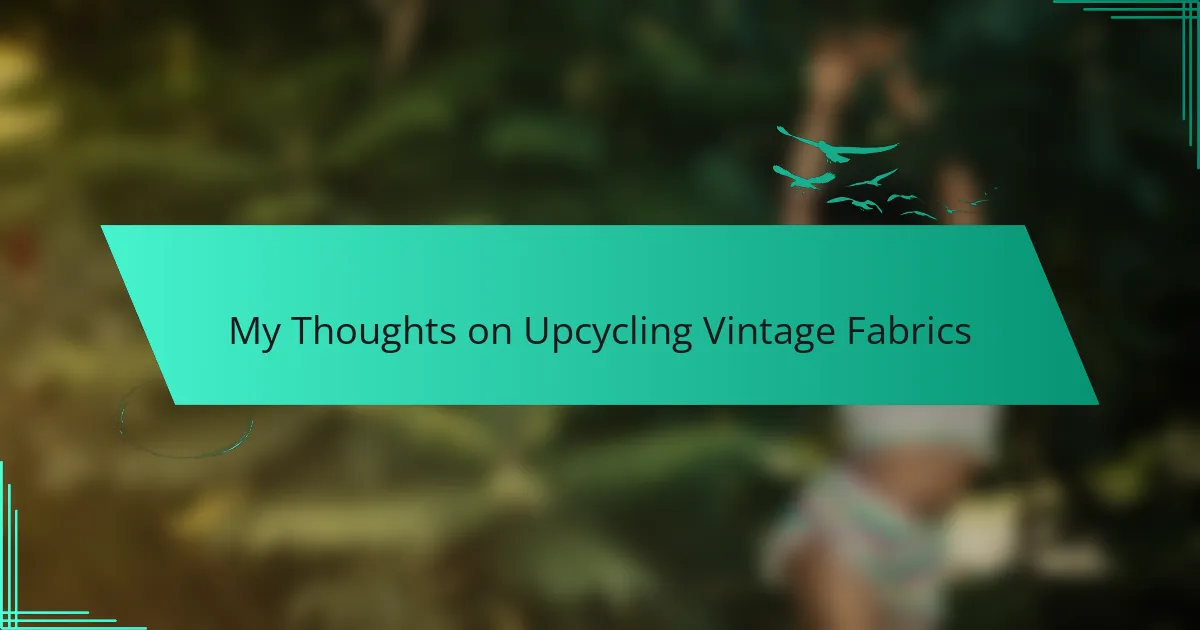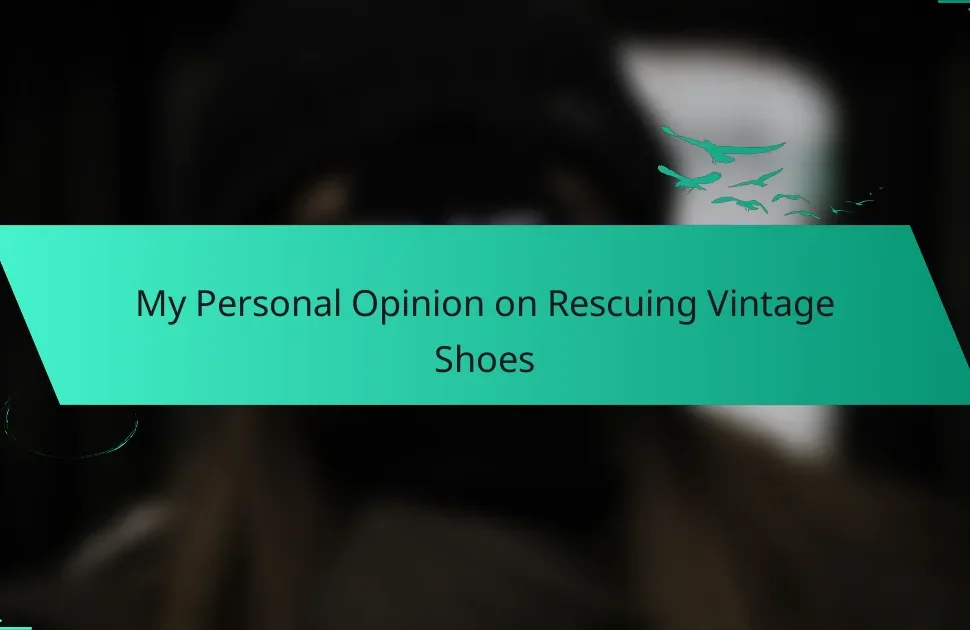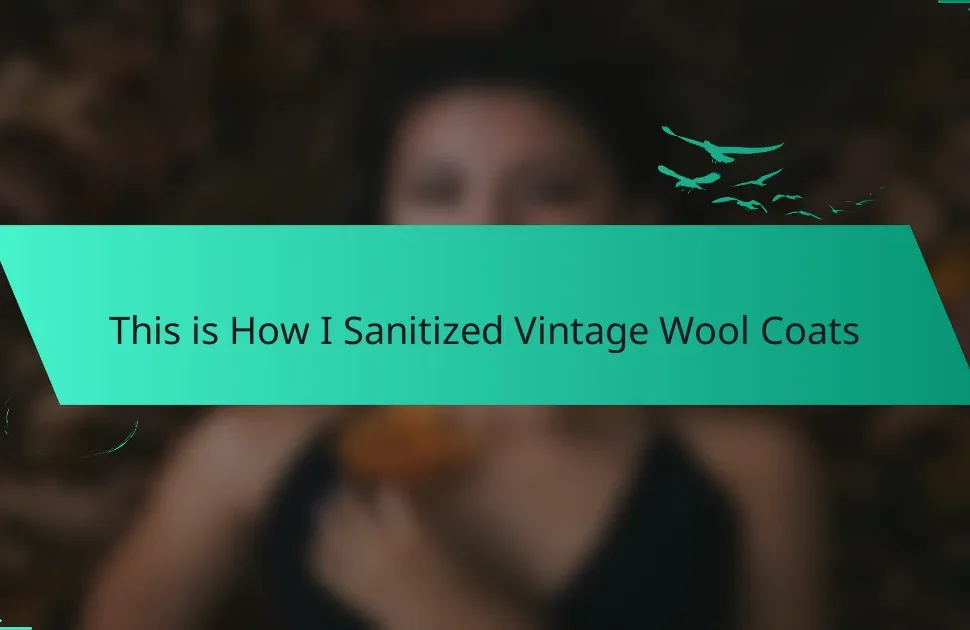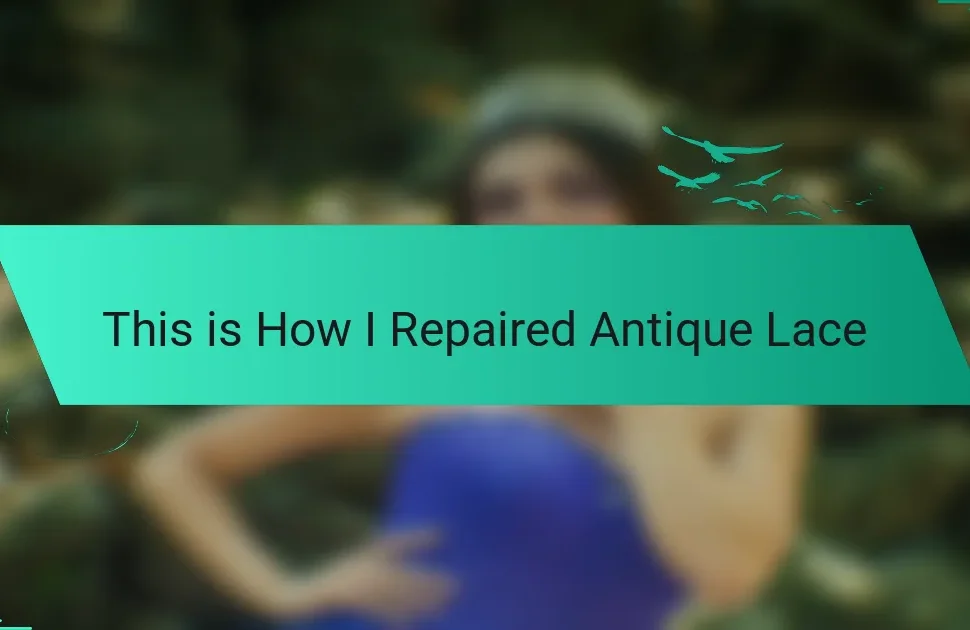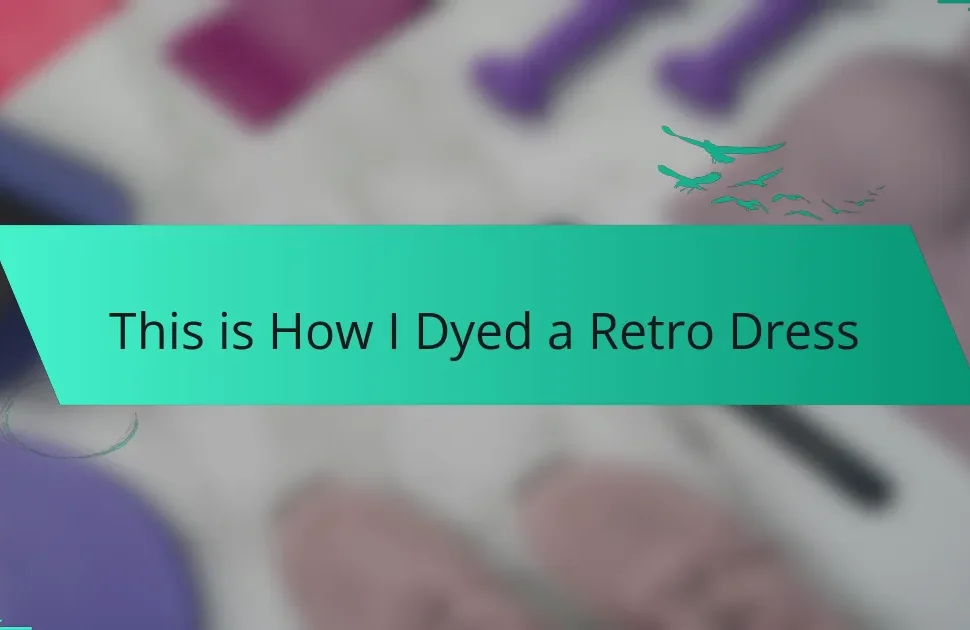Key takeaways
- Upcycling fabrics involves transforming old materials into unique, sustainable creations, promoting environmental responsibility and creativity.
- Vintage fabrics offer distinctiveness, historical value, and quality, enhancing DIY projects with unique patterns and textures.
- Benefits of upcycling in fashion include reducing waste, promoting personal expression, and connecting with fashion history.
- Techniques like patchwork and dyeing can revitalize vintage fabrics, creating beautiful new items that carry stories and memories.
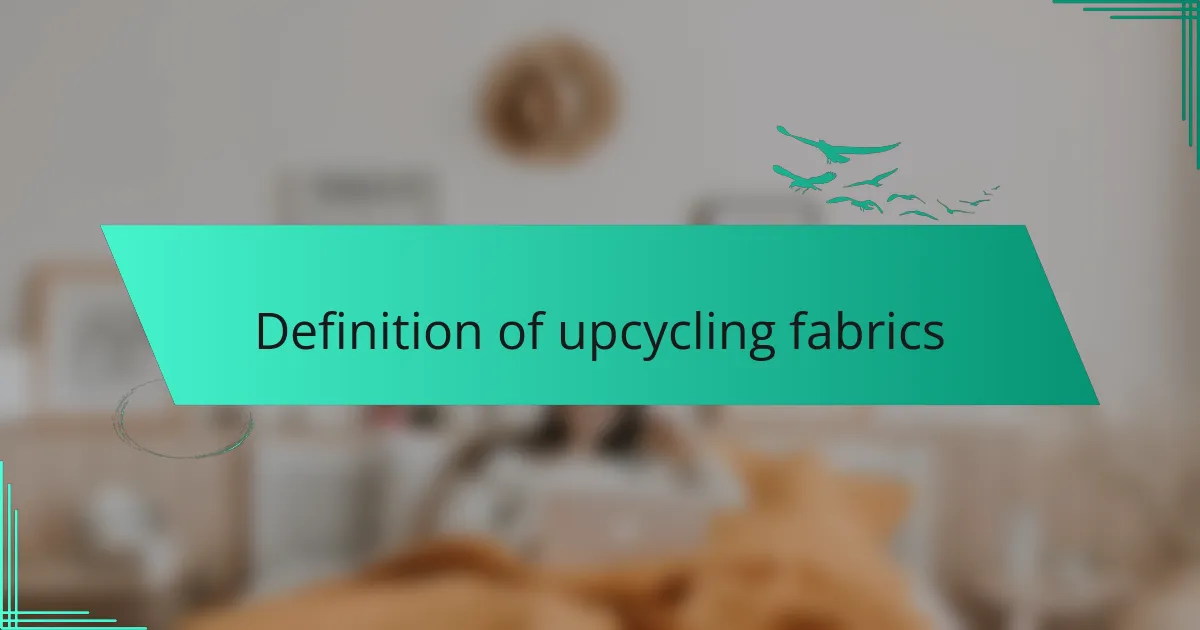
Definition of upcycling fabrics
Upcycling fabrics involves taking old or discarded materials and transforming them into something new and valuable. I remember the first time I stumbled upon a box of vintage fabrics at a flea market; the colors and textures sparked my imagination instantly. Instead of throwing them away, upcycling gives those fabrics a second life, allowing us to create unique pieces while also promoting sustainability.
One of the joys of upcycling is the creative challenge it presents. It’s like a puzzle, figuring out how to repurpose materials in a way that highlights their original beauty while adding a fresh twist. Here’s a quick breakdown of what upcycling entails:
- Repurposing: Transforming old garments or fabric scraps into new items, such as bags or home décor.
- Sustainability: Reducing waste and minimizing the environmental impact of fashion.
- Creativity: Encouraging a personal touch in DIY projects, making each creation one-of-a-kind.
- Cost-effective: Breathe new life into vintage treasures without the high price tag of new materials.
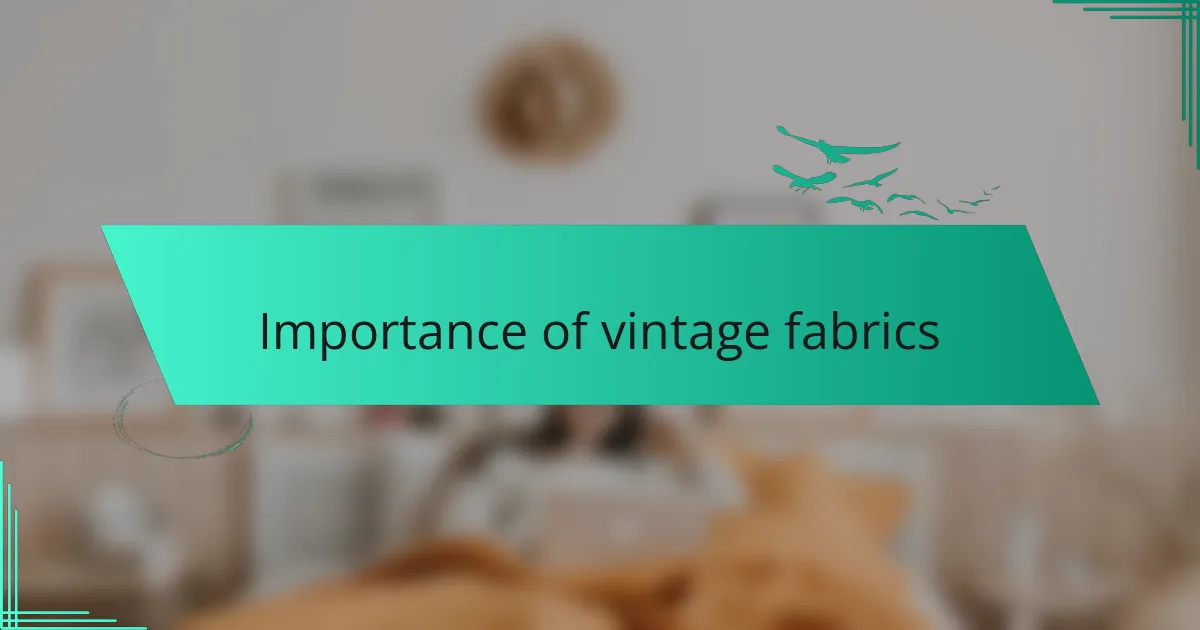
Importance of vintage fabrics
When I think about vintage fabrics, I can’t help but feel a sense of nostalgia. Each piece carries a story, often reflecting the creativity and craftsmanship of its time. The textures and colors found in vintage fabrics simply aren’t replicated in modern materials, giving them a unique character that can elevate any DIY project.
Vintage fabrics are incredibly important for several reasons:
- Sustainability: Upcycling vintage fabrics reduces waste and promotes environmentally-friendly practices.
- Uniqueness: Original patterns and textures offer a distinctive touch that mass-produced fabrics lack.
- Historical Value: Wearing or repurposing vintage fabrics connects us to the history of fashion and the artisans of the past.
- Quality: Many vintage fabrics were made with intricate techniques and durable materials that stand the test of time.
Reflecting on my own experiences, I remember the thrill of finding a beautiful floral print at a thrift store that inspired an entire wardrobe refresh. Each time I work with vintage fabrics, it feels like I’m tapping into the very essence of those who wore them before me.
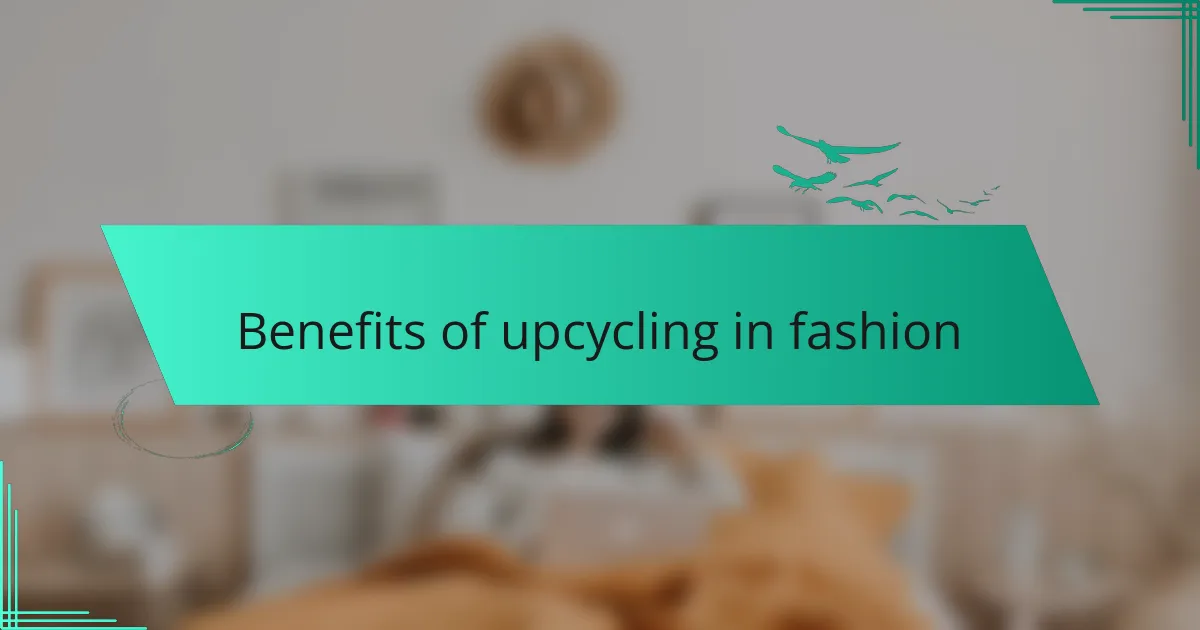
Benefits of upcycling in fashion
When it comes to upcycling vintage fabrics in fashion, the benefits are both practical and deeply personal. I find that each piece carries its own story, creating a unique character that makes the final creation feel special. This emotional connection often inspires me to cherish my work even more, knowing I’m giving new life to something that might have been forgotten.
Upcycling also promotes sustainability, which I am passionate about. By repurposing materials that might otherwise end up in a landfill, we contribute to reducing waste and conserving resources. It’s a win-win situation: we get beautiful, one-of-a-kind pieces, and we do our part for the planet.
Benefits of Upcycling in Fashion:
– Environmental Impact: Reduces waste by repurposing old textiles.
– Creativity: Encourages unique designs that stand out from mass-produced clothing.
– Cost-Effectiveness: Saves money by utilizing materials that are often inexpensive or free.
– Personal Expression: Allows for customization, reflecting individual style and values.
– Historical Appreciation: Connects you to past trends and stories, enriching your understanding of fashion history.
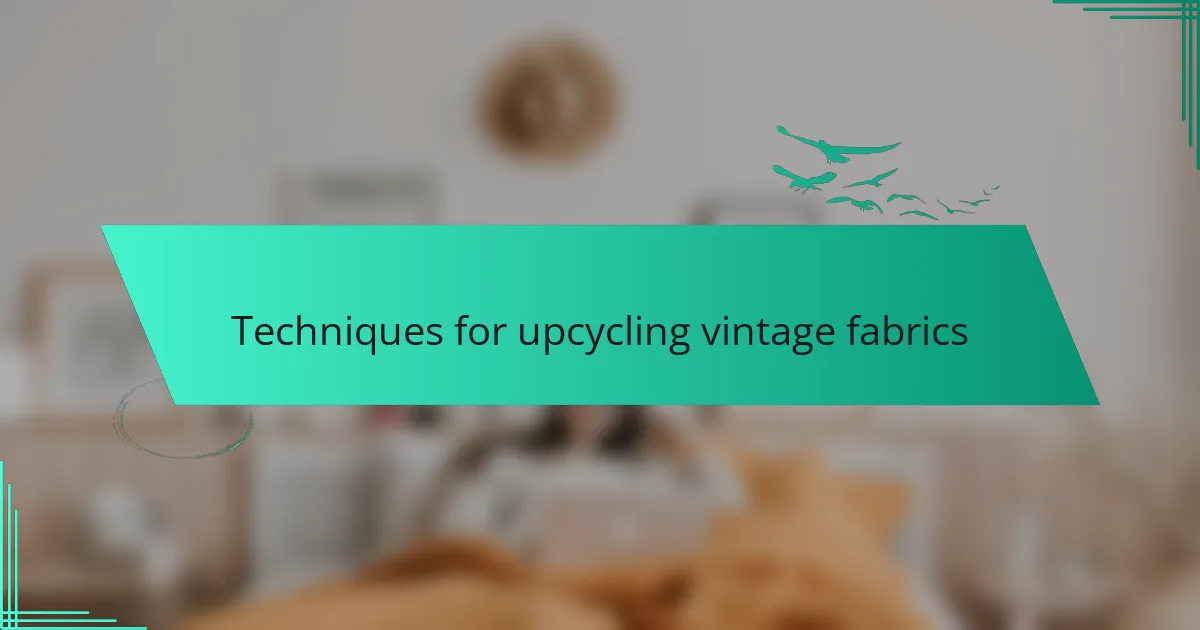
Techniques for upcycling vintage fabrics
When it comes to techniques for upcycling vintage fabrics, there’s a world of creativity waiting to be explored. I often find myself experimenting with patchwork, where I stitch together various fabric pieces to create a vibrant new design. This technique not only breathes new life into scraps but also adds a beautiful, eclectic feel to any project. Who knew that what was once considered leftover could become the focal point of a stunning tote bag?
Another method I love is dyeing vintage fabrics. This technique can completely transform the colors and make them more contemporary. I remember successfully using natural dyes from avocados to create a soft blush hue on an old linen scarf. It’s amazing how embracing the imperfections of vintage fabrics, like faded colors or worn textures, can lead to unexpected beauty in the final outcome. Have you ever thought of how simple changes can create such a significant impact on your creations?
Lastly, upcycling vintage lace or trims can lend an exquisite touch to garments or home décor. I once salvaged beautiful lace from a damaged tablecloth and used it to embellish a simple white blouse. The addition instantly elevated the piece, making it feel special and unique. This technique not only preserves the charm of vintage artistry but also allows you to carry a piece of history into your modern wardrobe. So, what are you waiting for? Dive into your fabric stash and let your imagination run wild!
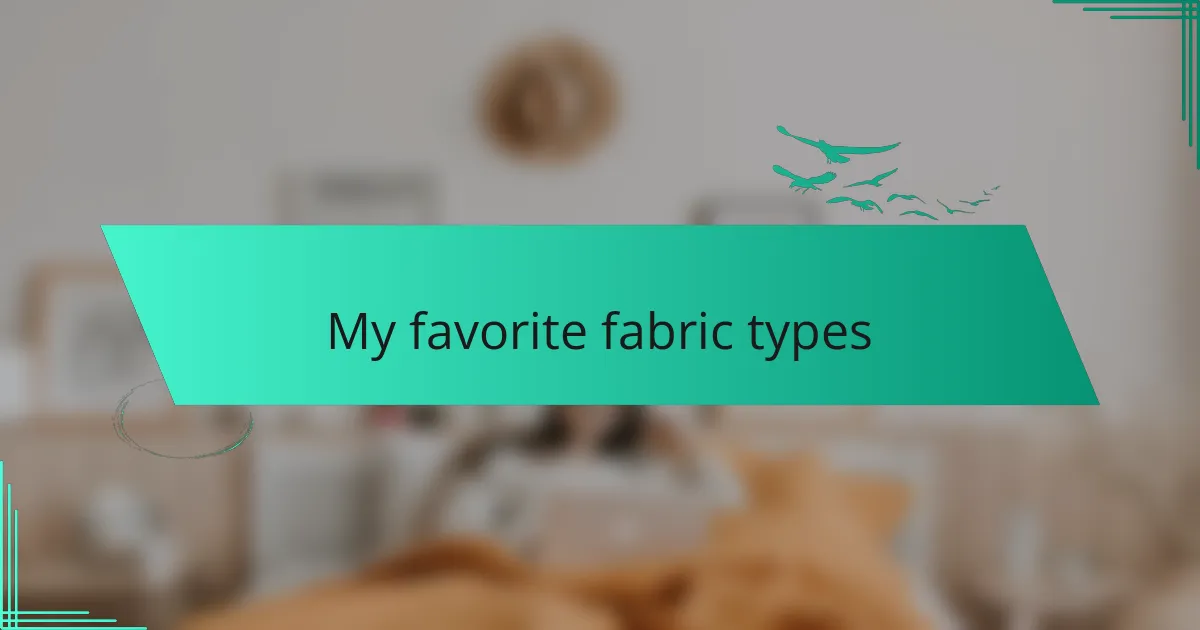
My favorite fabric types
When it comes to upcycling vintage fabrics, I find myself drawn to ‘70s corduroy. There’s something about its velvety texture and rich colors that sparks nostalgia for childhood adventures in my grandmother’s attic. I remember rummaging through her fabric stash, feeling the soft ridges of corduroy among other treasures. It’s durable and versatile, perfect for creating everything from cozy jackets to chic bags.
In addition to corduroy, I have a soft spot for floral cottons. They evoke a whimsical charm and remind me of sunny afternoons spent crafting with friends. I love how a simple cotton fabric can transform a mundane pattern into a vibrant statement piece. Here’s a quick list of my favorite fabric types for upcycling:
- Corduroy: Perfect for jackets, trousers, and bags.
- Floral Cotton: Great for dresses and home décor.
- Tweed: Ideal for structured garments and accessories.
- Silk: Excellent for scarves and delicate layering pieces.
- Denim: Versatile for anything from jeans to patches.
Each of these fabrics holds a story, and I can’t help but feel excited imagining the possibilities they bring to life.
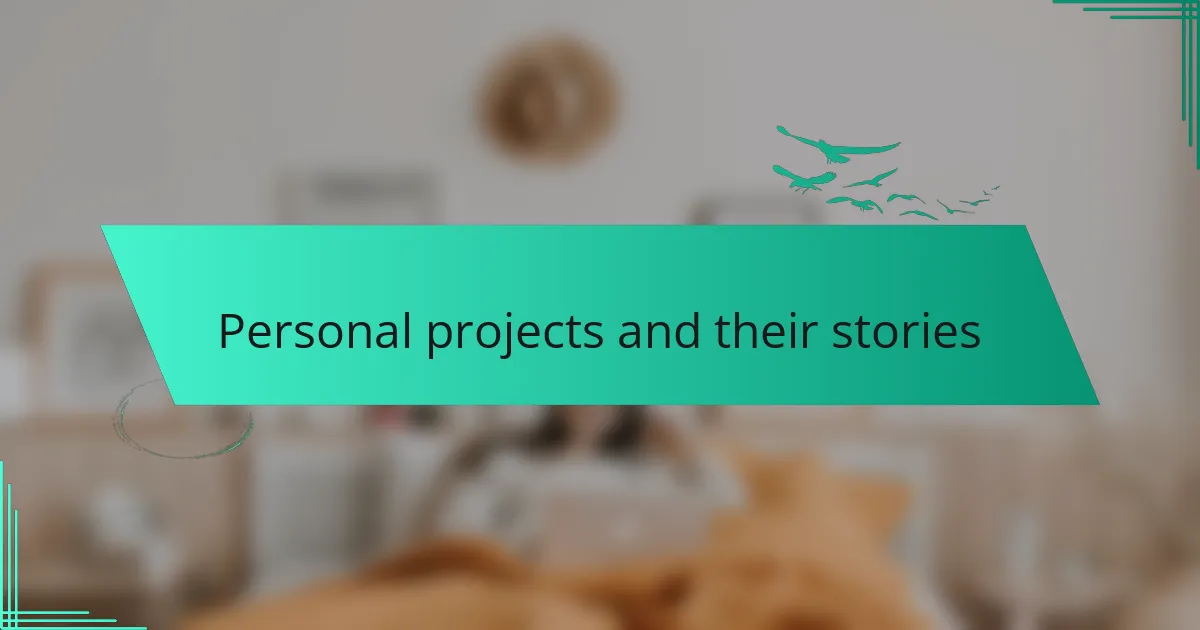
Personal projects and their stories
I vividly remember my first project with upcycled vintage fabric. I found an old paisley scarf at a thrift store, frayed but bursting with colors that instantly transported me back to the ’60s. After a little cleaning and some careful stitching, it transformed into a vibrant headband that I wore with pride. Every time I put it on, I felt a connection to the past—like a little piece of history was part of my story.
Then there was the time I decided to make tote bags from an assortment of retro tablecloths. Each fabric pattern had its own flair, and I had a blast combining them to create something functional and fun. As I sewed each seam, I couldn’t help but think about the gatherings and meals those tablecloths might have witnessed. Turning them into something new felt like honoring their past while giving them a fresh purpose.
One of my most cherished projects was a patchwork quilt made from remnants of vintage sheets. As I pieced together various patterns and colors, I reflected on the happy memories tied to those fabrics, like lazy Sunday mornings or cozy family nights. It made me wonder—how many stories do our clothes carry? Through upcycling, we not only create but also connect with myriad histories, making each project not just a craft but a tapestry of shared experiences.
